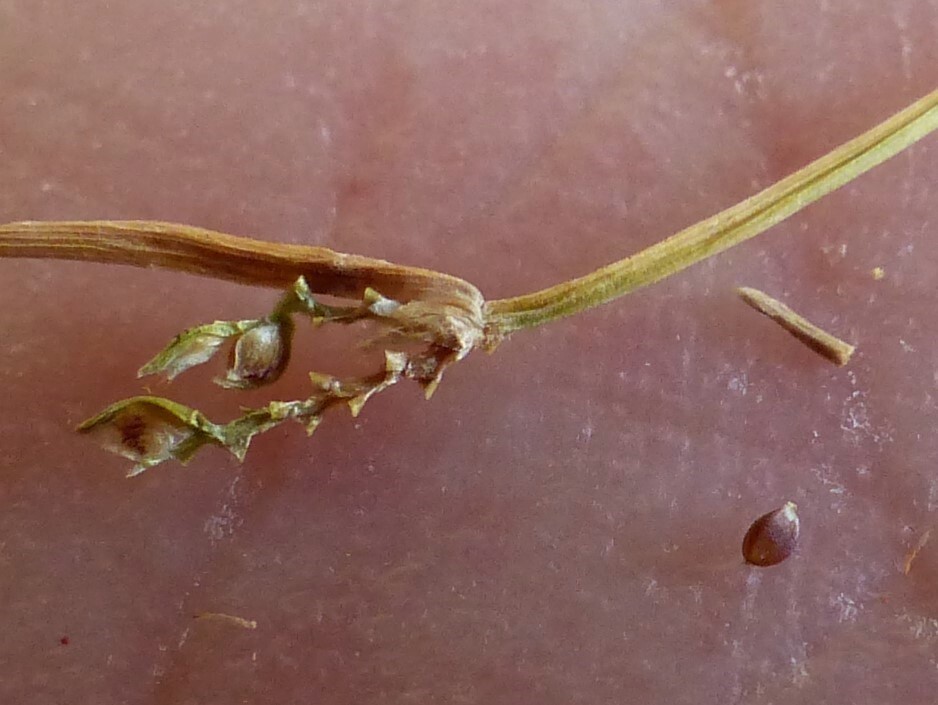Isolepis subtilissima
Boeck.Small perennial with short filiform rhizome. Culms filiform, to 10 cm high. Leaves well-developed, blades to 9 cm long. Inflorescence sometimes proliferating. Spikelets 1–3, 2–5 mm long; involucral bract exceeding inflorescence, to 2 cm long; glumes usually obtuse, not mucronate, with several ill-defined nerves on sides, straw-coloured tinged dark red-brown to mostly dark red-brown, 0.8–1.3 mm long; stamen 1 (rarely 2 or 3 in lower flowers); anthers 0.2–0.5 mm long; style 3-fid. Nut ± unequally trigonous, with angles well-defined, obovoid to broad-ellipsoid, minutely roughened, glistening, pale yellow to pale red-brown, nearly as long as glume, 0.7–1.1 mm long, 0.5–0.7 mm diam. Flowers spring–summer.
VRiv, GipP, OtP, WaP, Gold, CVU, GGr, NIS, EGL, EGU, HSF, HNF, MonT, HFE, VAlp. Also Qld, NSW, ACT, Tas. Widespread in SE Asia and Australasia: Sabah, Papua New Guinea, New Zealand and the Philippines. Widespread in moist, often shaded sites from near sea-level (e.g. Mornington Peninsula) to margins of bogs and ephemeral pools in the alps.
This species is very close to Isolepis habra from which it differs in being generally more slender, with somewhat longer rhizome, usually solitary spikelet, shorter glumes, and more slender nut.
Wilson, K.L. (1994). Cyperaceae. In: Walsh, N.G.; Entwisle, T.J., Flora of Victoria Vol. 2, Ferns and Allied Plants, Conifers and Monocotyledons, pp. 238–356. Inkata Press, Melbourne.
 Spinning
Spinning

